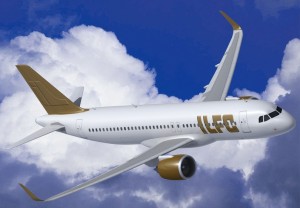Newsletter May 2014 – Trends in Aircraft Leasing and Financing, since Le Bourget 2013
Trends in Aircraft Leasing and Financing, since Le Bourget 2013
 Taking a look into the insight of the approaching Farnborough Air Show, to be held this July, it is good to have an insight into the strengths and weaknesses of the aviati on market, and to forecast where funds may be generated. In hope that new investors will come to fruition, and in turn airlines and those alike will continue to exploit financial issues from various directions. This decade is truly crammed with production and deliveries of the most modern aircraft types such as the Airbus A320neo family and the Boeing 737 MAX. Meanwhile, the question arises to whether the trend of developing new technologies to combat rising fuel costs will hinder the secondary market and hold back lease rates.
Taking a look into the insight of the approaching Farnborough Air Show, to be held this July, it is good to have an insight into the strengths and weaknesses of the aviati on market, and to forecast where funds may be generated. In hope that new investors will come to fruition, and in turn airlines and those alike will continue to exploit financial issues from various directions. This decade is truly crammed with production and deliveries of the most modern aircraft types such as the Airbus A320neo family and the Boeing 737 MAX. Meanwhile, the question arises to whether the trend of developing new technologies to combat rising fuel costs will hinder the secondary market and hold back lease rates.
Since Le Bourget Air Show 2013, aviation finance provision continues in the wakening of an increase in the number of orders. In this respect, the next generation single-aisle and twin-aisle aircraft is playing a key role.
More than 1,100 orders and commitments were made since last year’s Paris Air Show. One of the driving forces of this order wave is believed to be the replacement of aging fleets with modern aircraft equipment, using the latest technology, which is the aircraft operator’s most important wish, regardless of the airlines’ financial performance. This trend is the direct result of high fuel costs that in extremes where hedging strategies have backfired can contribute to miss opportunities or lose revenues. Europe is maybe an impartial example of this trend, as it further adds to the already increasing orders. The question is how these aircrafts will be financed, in particular, where once-prominent European banks, today are partially looking into getting rid of their debts. Needless to refer to Basel III, where there continues to be teetering, and which has been extended to January 2019.
At present, aircraft financing of which the aircraft delivery value is estimated to be at $110 billion is continuing its shift from West-to-East. In the Japanese and Chinese markets is also an increasing activity with financial tools such as the Japanese Operating Lease (JOL). The activities of Sumitomo Mitsui and Mitsubishi are again emphasizing the region’s keenness for hard assets, such as aviation-related investments.
 This is certainly no surprise as airlines are looking to secure the best financial rates, which are no longer being offered by the popular Export Credit Agencies (ECAs) due to updates in the Aircraft Sector Understanding (ASU). This creates a level playing field for host countries, as rates are now more representative for commercial debts.
This is certainly no surprise as airlines are looking to secure the best financial rates, which are no longer being offered by the popular Export Credit Agencies (ECAs) due to updates in the Aircraft Sector Understanding (ASU). This creates a level playing field for host countries, as rates are now more representative for commercial debts.
This means that interest rates have gone up, and in some instances more than doubled compared to what they were in the past. These rates are driven by operator credit risk ratings with airlines in the higher ratings (AAA-BBB), expected to bill from 8 percent of their financing needs and with lower-rated airlines expected to produce up to 18 percent.
New market players
Despite aircraft values having some associated volatility, particularly, as they enter the secondary and tertiary stages of life, they are seen as predictable returns. Therefore, there is increased issuance of JOLs and other Sovereign Wealth Funds in China, Singapore and the Middle East. Potential investors are now investing in other aircraft assets, more specifically engines. An engine value profile is somewhat different than an aircraft value profile. This is why engines offer more opportunities at a lower initial cost, and at the end of the aircraft cycle make up for around 80 percent of the aircraft value.
There is definitely a push for Japanese investors to understand this side of the market in more detail and there is likely to be some new entrants, not only for aircraft investments but also for engine investments. Such will arise within the Middle East through aircraft engines and component pools, and by identifying ways in which aviation finance can be most effective.
New investors will come to fruition, and, in turn, airlines and those alike will continue to exploit finance from these avenues. British Airways are illustrating this trend by gaining access to U.S. dollar funds through enhanced equipment trust certificates (EETC) in order to finance its latest batch of 787 aircraft. Until now, U.S. carriers have applied this method but nowadays non-U.S. carriers are also seizing these opportunities; a phenomenon that will continue to increase.
 The most recognisable trend is the presence of lessors and sale-and-leasebacks. Finance has often been less of a concern for lessors, as they frequently meet the investment grade to gain access to the capital markets at much cheaper rates. For an airline hoping to make an agreement with a lessor, there are obvious benefits as the residual value risk lies with the lessor. However, one shall note that when securing new aircraft airlines can gain access to pre-booked delivery slots (cfr. the Doric Lease Corporation deal). Aircraft leasing through sale-and-leasebacks has also been on the rise for many years and is expected to continue thanks to new entrants into the market, and the colossal deal involving AerCap and ILFC (despite further orders not being part of short-term strategic plans). Other examples are, Hong Kong Aviation Capital (HKAC), a fast growing lessor that ordered 60 Airbus A320neo aircrafts in the year 2013, and the acquisition made by many other airlines through the acquisition of Allco, pre-delivery financing, and sale and leaseback opportunities.
The most recognisable trend is the presence of lessors and sale-and-leasebacks. Finance has often been less of a concern for lessors, as they frequently meet the investment grade to gain access to the capital markets at much cheaper rates. For an airline hoping to make an agreement with a lessor, there are obvious benefits as the residual value risk lies with the lessor. However, one shall note that when securing new aircraft airlines can gain access to pre-booked delivery slots (cfr. the Doric Lease Corporation deal). Aircraft leasing through sale-and-leasebacks has also been on the rise for many years and is expected to continue thanks to new entrants into the market, and the colossal deal involving AerCap and ILFC (despite further orders not being part of short-term strategic plans). Other examples are, Hong Kong Aviation Capital (HKAC), a fast growing lessor that ordered 60 Airbus A320neo aircrafts in the year 2013, and the acquisition made by many other airlines through the acquisition of Allco, pre-delivery financing, and sale and leaseback opportunities.
Fleet modernisation is changing the performance of certain markets
The question today is to ascertain if the trend of acquiring aircraft equipped with new technology to combat rising fuel costs will hinder the secondary market and lease rates, and how fast the latest technological enhancements will be implemented? From our point of view, the replenishment of technology is not always the most advantageous for aircraft owners, especially when considering typical lease terms. These may vary from new to about eight to twelve years, single-aisle or twin-aisle respectively. This has also created problems for secondary market aircraft and for other major assets, such as engines.
One should consider the continuing pressure to make the transition from old to new, which can lead to decreased life spans for certain aircraft. This maybe discussed, however the current single-aisle aircraft is continuously being targeted. For instance, the Airbus A320 in 2013, where the average fleet age is 8.25 years and the average retirement age stands at 19.2 years. Some are scrutinizing the younger aircraft in the entire fleet because of the introduction of the A320neo, the 737 MAX and other players due for service entry for the next coming five years. We think that these impending service entries will put pressure on the retirement ages of current single-aisle aircrafts to the point where any A320 or 737 NG is vulnerable. The experienced scenario in the 737 Classic markets, where on going fleet replenishment takes place, may serve as a valid precedent. This indeed is a major concern. With lease rates largely being suppressed, worries over aircraft life and further placements after first operator lease terminations will question whether lease rates will need to move north to improve margins amidst for the risk of future replacements.
A more important financing role for aircraft manufacturers?
The question that one may have is that the original equipment manufacturer will have to fill part of this gap, in particular, for newer aircraft through their respective leasing arms (e.g. Boeing Capital Corporation). The past placement of 717-200s to Hawaiian Airlines is a good example.
When comparing Boeing and Airbus support, this is definitely an avenue where eliminating the snags of securing finance could be crucial in claiming orders in a market where it is hard to choose from. Some market observers say that Boeing has been delving into it more and more. We do expect that in the short run an increase in operating leases combined with enhancing regulations, such as, Basel III. One has as well the ASU and the implementation of the Cape Town Convention and also new types of financing such as EETC.
For further information and comment, please contact Arthur Flieger (Flieger@fliegerlaw.com, +32 3 238 77 66)
© 2014 A. Flieger – This publication is defined to provide accurate and authoritative information in regard to the subject matter covered. It is transmitted with the understanding that the publisher is not engaged in rendering legal, or any other professional services. If legal advice or other expert assistance is required, professional services should be sought. You can always contact A. Flieger at flieger@fliegerlaw.com.






